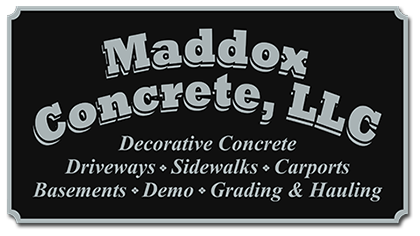

Concrete is one of the most widely used construction materials due to its durability, versatility, and strength. However, it is not immune to cracking. Cracks in concrete can compromise the structural integrity and aesthetic appeal of a project. Understanding how to prevent cracks in concrete is essential for any builder or homeowner. This article explores the ways to minimize cracks in concrete and provides best practices for preventing concrete cracks.
Why Concrete Cracks
Before delving into prevention methods, it’s crucial to understand why concrete cracks. Cracking can occur due to several factors, including:
Shrinkage
As concrete cures and dries, it shrinks. This shrinkage can cause the concrete to crack, especially if it dries too quickly or unevenly. Proper curing techniques are essential to manage shrinkage and prevent cracks.
Thermal Changes
Concrete expands and contracts with temperature changes. In hot weather, concrete expands, while in cold weather, it contracts. These thermal movements can cause cracks if the concrete is restrained by fixed points or if the thermal changes are extreme.
Structural Load
Excessive load or improper support can lead to cracks in concrete. Overloading or uneven loading can create stress points, causing the concrete to fracture.
Settlement
Settlement occurs when the ground beneath the concrete moves or sinks. This can be due to soil compaction, moisture changes, or other factors. Settlement can lead to uneven surfaces and cracks.
Best Practices for Preventing Concrete Cracks
Proper Mix Design
One of the most effective ways to minimize cracks in concrete is to ensure a proper mix design. The concrete mix should have the right proportions of cement, water, aggregates, and additives to achieve the desired strength and durability. A well-designed mix reduces the risk of shrinkage and thermal cracking.
Adequate Curing
Curing is the process of maintaining adequate moisture, temperature, and time to allow concrete to achieve its desired properties. Proper curing reduces shrinkage, improves strength, and minimizes the risk of cracking. Common curing methods include:
- Water Curing: Keeping the concrete surface moist by spraying or covering with wet burlap or plastic sheets.
- Sealing Curing: Applying curing compounds that form a protective film on the surface to retain moisture.
Control Joints
Control joints are deliberate cracks created at predetermined locations to direct where the concrete will crack. They are essential in preventing random cracking by providing a controlled path for crack formation. Control joints should be:
- Placed at appropriate intervals (typically 10-20 feet apart for sidewalks and driveways).
- Cut to a depth of one-quarter of the slab thickness.
- Positioned where expected natural cracks would occur.
Reinforcement
Reinforcing concrete with steel bars (rebar) or wire mesh adds strength and helps distribute loads evenly. Reinforcement minimizes the risk of structural cracks by providing additional tensile strength to the concrete.
Avoiding Overloading
Concrete structures should not be subjected to excessive loads during the curing period. Overloading can create stress points and lead to cracks. Proper planning and load management are essential to avoid overloading.
Soil Preparation
Proper soil preparation is critical to prevent settlement-related cracks. The ground beneath the concrete should be well-compacted and stable. Using a suitable base material, such as crushed stone or gravel, helps create a stable foundation.
Temperature Management
Temperature management is crucial during concrete placement and curing. Extreme temperatures can cause thermal cracking. In hot weather, measures such as shading, cooling the mix, or using retarders can help manage temperature. In cold weather, insulating blankets or heating elements can protect the concrete from freezing.
Moisture Management
Managing moisture content is essential to prevent both shrinkage and thermal cracks. The concrete mix should have the right water-cement ratio. Excess water in the mix can lead to increased shrinkage, while too little water can make the mix too dry and prone to cracking.
Timely Joint Cutting
Cutting control joints should be done at the right time. If joints are cut too early, the concrete may ravel or crack near the joints. If cut too late, the concrete may already have developed random cracks. Typically, joints should be cut within 24 to 48 hours after pouring the concrete.
Additional Tips for Minimizing Cracks in Concrete
Use High-Quality Materials
Using high-quality materials, including cement, aggregates, and admixtures, ensures better performance and durability of concrete. Low-quality materials can lead to weak concrete and increased risk of cracking.
Consider Fiber Reinforcement
Fiber reinforcement, such as polypropylene or steel fibers, can be added to the concrete mix to enhance its crack resistance. Fibers help distribute stress and reduce the formation of shrinkage cracks.
Ensure Uniform Thickness
Maintaining a uniform thickness throughout the concrete slab prevents weak spots that are more susceptible to cracking. Inconsistent thickness can lead to differential settling and stress concentrations.
Monitor and Maintain
Regular monitoring and maintenance of concrete structures can help identify and address potential issues before they become serious. Cracks should be repaired promptly to prevent further damage and deterioration.
Conclusion
Preventing cracks in concrete requires a combination of proper planning, material selection, and construction techniques. By following the best practices for preventing concrete cracks outlined in this article, builders and homeowners can ensure the durability and longevity of their concrete structures. Whether through proper mix design, adequate curing, or the use of control joints and reinforcement, taking proactive measures can significantly reduce the risk of cracks and enhance the performance of concrete.
Need Concrete Contractors in Sanford, NC?
We are the area’s best concrete company. We specialize in concrete finishing of all types of concrete for residential and commercial customers. Our services include pavement, driveways, footings, sidewalks, decorative concrete, hauling, demolition, and property grading. We’re fully insured. Contact us today for quality workmanship and service.

